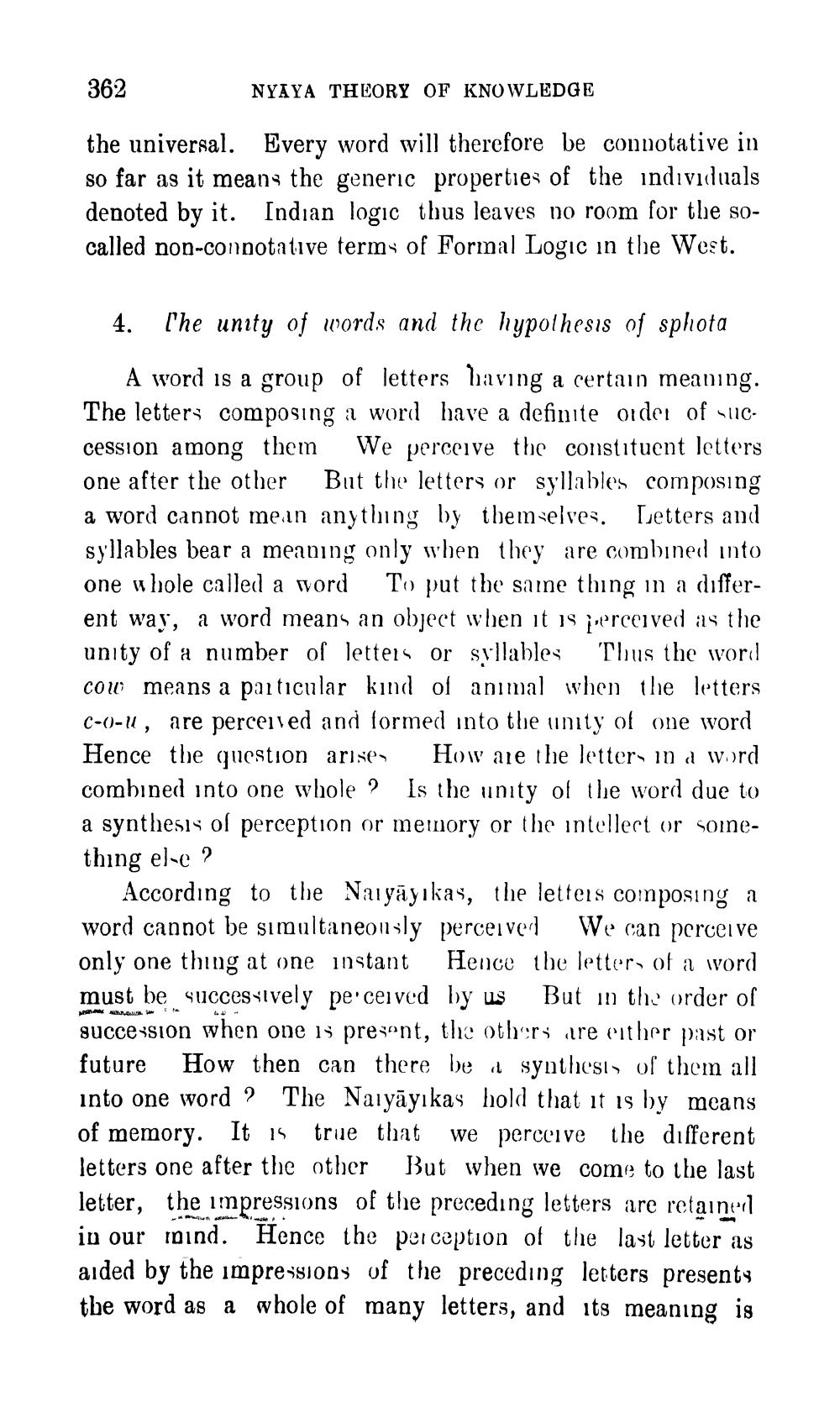________________
362
NYAYA THEORY OF KNOWLEDGE
the universal. Every word will therefore be connotative in so far as it means the generic properties of the individuals denoted by it. Indian logic thus leaves no room for the socalled non-connotative terms of Formal Logic in the West.
4. The unity of words and the hypothesis of sphota
A word is a group of letters waving a certain meaning. The letters composing a word have a definite order of succession among them We perceive the constituent letters one after the other But the letters or syllables composing a word cannot mean anything by themselves. Letters and syllables bear a meaning only when they are combined into one whole called a word to put the same thing m a different way, a word means an object when it is perceived as the unity of a number of letters or syllables Thus the word cow means a particular kind of animal when the letters C-0-0, are perceived and formed into the unity of one word Hence the question arises How are the letters and word combined into one whole ? Is the unity of the word due to a synthesis of perception or memory or the intellect or soinething else ?
According to the Naiyāyıkas, the letters composing a word cannot be simultaneonsly perceivert We can perceive only one thing at one instant Hence the letters of a word must be successively perceived by us But in the order of succession when one is present, the others are either past or future How then can there be a synthesis of them all into one word ? The Naiyāyıkas hold that it is by means of memory. It is true that we perceive the different letters one after the other But when we come to the last letter, the impressions of the preceding letters are retaineil in our roind. Hence the perception of the last letter as aided by the impressions of the preceding letters presents the word as a whole of many letters, and its meaning is
ANNIS




